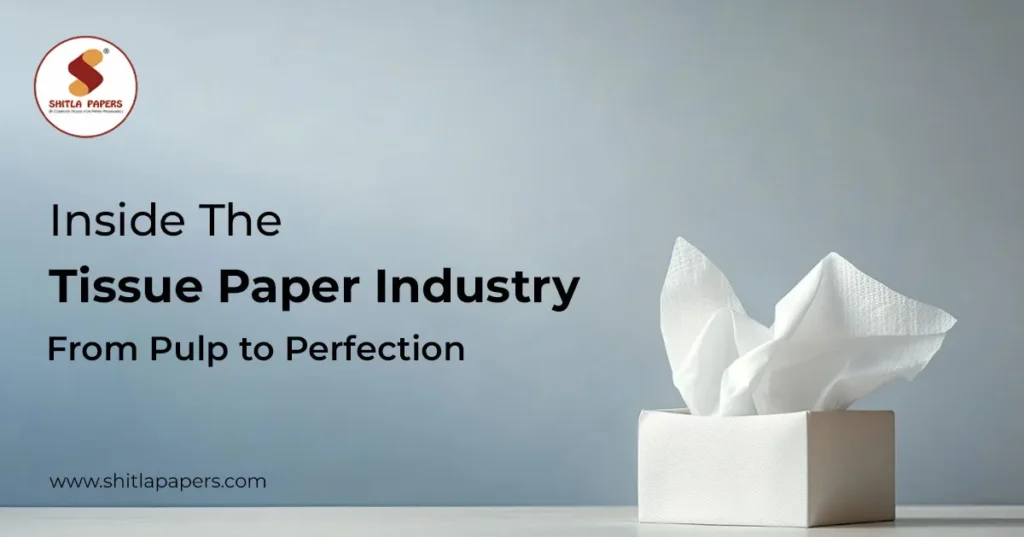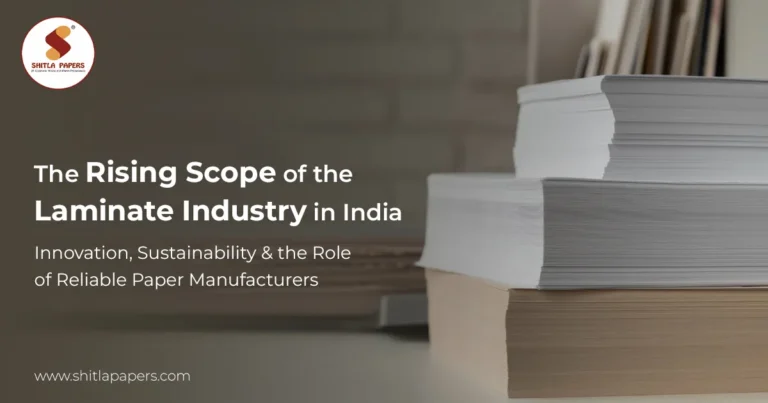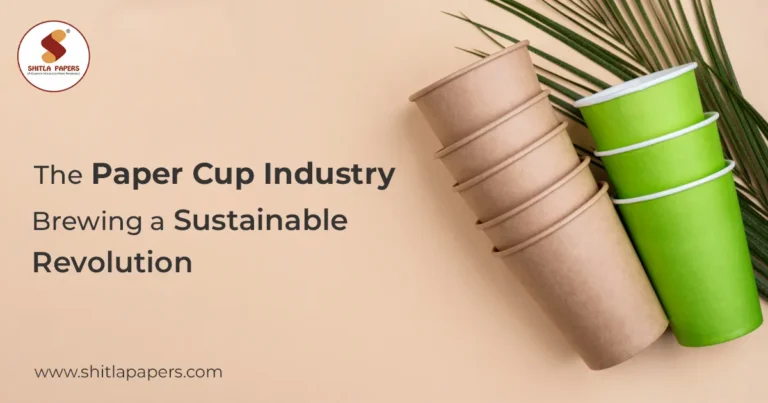Tissue paper may appear to be a mundane, ordinary product, but beneath its gentle touch is a rich history of innovation, greenness, and industry development. From the time raw materials are converted into thin sheets to the moment it ends up in our hands, the tissue paper business is an active industry with a far-reaching influence on everyday life and the economy as a whole.
Table of Contents
The Significance of Tissue Paper in Our Lives
Tissue paper is important for hygiene, comfort, and convenience. Facial tissues to blow a sneeze, toilet paper for personal hygiene, paper towels in the home and workplace – this humble product brings cleanliness and comfort to millions of individuals every day.
The utility of tissue paper goes beyond domestic use. Healthcare utilizes high-quality tissues to ensure sanitary conditions, minimize the risk of infection, and offer comfort to patients. Restaurants, offices, and hotels utilize tissue paper to improve customer experience through improved hygiene and convenience. The sector also promotes employment, technology growth, and environmentally friendly forestry practices, making it an essential part of the paper and pulp industry.
How Tissue Paper is Made: From Pulp to Perfection
The manufacturing process for tissue paper begins with raw materials such as virgin pulp (derived from wood) or recycled fibers. Fibers are purified, processed, and mixed to get the proper softness, strength, and absorbency.
- Pulping: Wood logs or recycled paper are converted into a fibrous pulp. Chemicals and mechanical processes eliminate impurities and break down the raw material to a smooth, workable consistency.
- Bleaching: To obtain tissue paper’s distinctive white color, pulp is frequently bleached. Contemporary bleaching processes minimize environmental damage while producing high-quality sheets.
- Sheet Formation: The pulp is distributed across large screens and pressed to drain excess water. The sheets are dried, smoothed, and wound into large rolls of tissue.
- Finishing: Depending on how it will be used, tissue paper can be embossed, perforated, or layered. Some are treated with lotion or scents for extra comfort. Lastly, the tissue paper is cut and packaged, ready for distribution.
The accuracy in every step is essential to ensure that the finished product delivers consumer expectations of softness, strength, and absorbency.
Types of Tissue Paper
The tissue paper business is varied, and there are various types to address various needs and desires. The following is a general overview of the primary types:
- Facial Tissue: Facial tissues are gentle, soft, and usually perfumed, and they are meant for personal cleanliness, specifically the face. They are usually 2-ply or 3-ply for greater comfort.
- Toilet Tissue: A staple in bathrooms across the globe, toilet tissue values softness, durability, and fast water disintegration to ensure safe disposal through sewage. It exists in multiple ply variations to provide comfort and sturdiness.
- Paper Towels: Absorbent and long-lasting tissues used to clean and dry in kitchens, restaurants, and offices. Paper towels frequently include embossing to maximize absorbency.
- Napkins: For dining and hospitality, napkins are both functional and decorative. Available in various sizes, colors, and designs, they suit informal meals as well as formal functions.
- Industrial Tissue: For use in the workplace, factories, and labs, industrial tissues emphasize strength and absorbency for wiping equipment, surfaces, and hands.
- Specialty Tissue: Added with lotion, fragrance, or biodegradable content, specialty tissues address specialty markets such as baby care or premium hygiene products.
Each variety has a specific function, demonstrating the diversity and necessity of tissue products in contemporary life.
Key Trends Driving the Tissue Paper Industry
The tissue paper market keeps adapting to new consumer requirements and ecological issues:
- Sustainability: As environmental concern grows, manufacturers are opting more and more for recycled fibers, sustainable forestry, and green packaging.
- Softness and Strength Innovation: Sophisticated manufacturing technologies enable the creation of ultra-strong and ultra-soft tissue papers that improve consumer experience.
- Personalization: From event napkins printed to luxury facial tissues that contain lotion or fragrance, customization is now a growing trend.
- World Demand: Increased population, urbanization, and growing hygiene consciousness are driving the world demand for tissue products. Developing markets are seeing huge growth in tissue usage.
Challenges in the Industry
Despite all this growth, the tissue paper sector has challenges:
- Raw Material Availability: Supply of pulp and price fluctuations influence the cost of production.
- Environmental Regulations: Production efficiency has to be balanced with environmental stewardship, such as waste control and water consumption.
- Competition: With many brands and low switching costs for consumers, businesses are forced to innovate constantly to remain competitive.
The Future of Tissue Paper
In the future, the tissue paper industry will become increasingly sustainable and innovative. Biodegradable, recyclable, and environmentally friendly tissue products are in demand. Automation, artificial intelligence, and sophisticated machinery are making production faster, minimizing waste, and increasing product quality. Demand for high-quality, specialty, and multi-functional tissues by consumers will keep pushing diversification in the market.
The role of the industry goes beyond hygiene and comfort—it’s a business that drives employment, innovation, and sustainable resource management. Through adopting technology and sustainability, the tissue paper industry can provide products that are both practical and sustainable.
Conclusion
From modest origins in the form of plain sheets of pulp to today’s high-quality, soft, and multifaceted tissues we consume, the tissue paper industry is a concoction of tradition, innovation, and responsiveness. It is an industry that reaches out to our daily lives in ways we tend to take for granted, providing hygiene, comfort, and convenience to households, workplaces, and public places.
Through knowledge of the processes, types, and importance of tissue papers, we better appreciate the apparently simple product that is, in reality, a pillar of contemporary living. From pulp to perfection, tissue paper is the best example of how innovation and care may turn everyday necessities into inseparable commodities.





